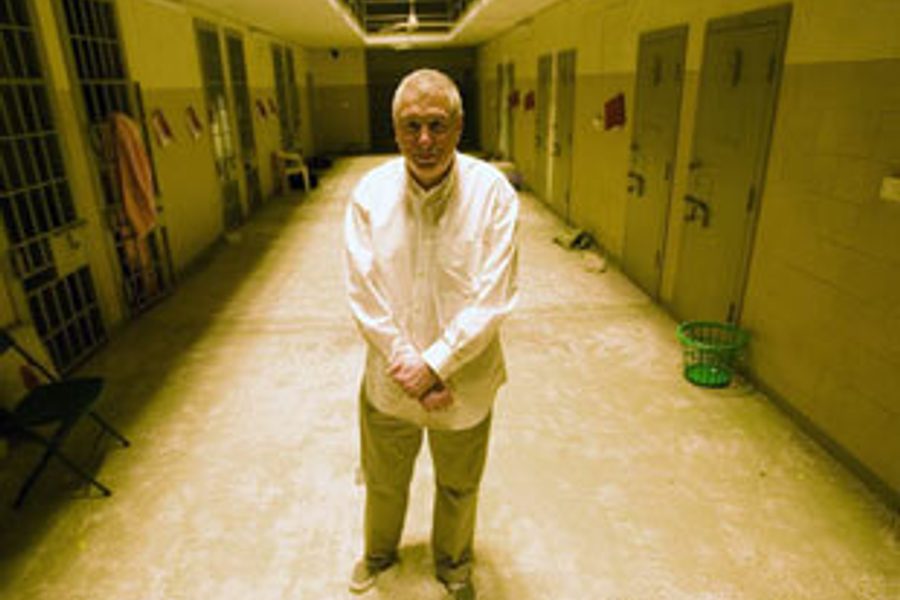
Filmmaker Errol Morris has grown famous and revered as the pioneer of what could be called interrogatory cinema – documentaries that do not merely document but probe into mysterious matters with the intention of uncovering their unknown truths. (The idea that visual “truth” remains a mystery is an integral part of his worldview.)
This obsessive agenda worked like gangbusters when Morris, in The Thin Blue Line, reshuffled the testimony and facts of a Texas cop-killing and ended up freeing a man from death row. But it’s a nettlesome and inadequate approach when Morris takes on larger political issues. In The Fog of War, he managed to grill former Defense Secretary Robert McNamara about details of his career without ever daring to ask him why he, McNamara, shouldn’t be held at least partly responsible for the more than 2 million civilian deaths in Indochina.
In his new film, Standard Operating Procedure, Morris revisits the Abu Ghraib scandal in his classically myopic way, scrutinizing and re-enacting and scab-picking the minutiae of the infamous incidents at the Iraqi prison – without considering the larger political implications, impact or context. He may well be the only filmmaker in America who can make movies about atrocity and yet resists any sort of overt ethical inquiry.
Perhaps Morris, who’s also been a part-time private investigator, has come to see “the truth” as a position that should place him outside the flow of political discourse.
But wait. Getting within fighting-range of Standard Operating Procedure’s moral knots means first cutting through its textural defenses. Morris’ famed dead-stare interview technique (a setup that allows subjects to talk to Morris while looking directly into the camera) serves as counterpoint to the film’s over-produced barrage of digital gimmickry, visual manipulation, re-enacted scenarios, double exposures (the “ghost detainees” become “ghostly,” get it?), focus-smudged close-up montages and bulldozingly “poetic” slow-motion asides (a frying egg, tumbling bullet cartridges, a prison hallway dreamily filled with shredded documents), none of which serve to elucidate anything at all. It’s as if Morris, with all of this foofaraw, seems determined to avoid real issues. Instead, he manufactures an impressionistic head-trip, a blitzkrieg of imagistic doodles about an Abu Ghraib-of-the-mind, not an investigation into the real prison.
Atop this casserole is ladled a yowling, booming score by composer Danny Elfman, which strains to conjure pulpy menace and portent that, at times, the film feels like “Operation Iraqi Freedom,” as brought to you by director Tim Burton.
Morris’ manic devotion to detail ultimately does the film in. Standard Operating Procedure is nothing if not an exhaustive recounting of what happened in the prison in the fall of 2003, among a handful of “specialists” of the 372nd Military Police Company and the assortment of detainees they were assigned to guard and, occasionally, “soften up” for interrogation.
What was happening elsewhere in the prison – and other incarceration sites – between interrogators and detainees, an untold number of whom died in the process, is of little interest to Morris. That’s because in this tiny arena, where a bizarre and depressing kind of fun-loving Lucifer Complex manifested, the soldiers took photographs. The snapshots were, of course, why Abu Ghraib became a scandal, and Morris is preoccupied with the chasm between what they reveal and what they don’t.
Interviewing Javal Davis, Lynndie England, Sabrina Harman and the other grunts involved (not the still-incarcerated Ivan Frederick and Charles Graner), Morris constructs a careful timeline. He reveals (irrelevantly) how investigators catalogued the photographic material. He also ferrets out the subtleties of each famous image – such as how much they may or may not represent torture, as it’s legally defined; how each came to happen; and how ambivalent everyone claims now to have felt then about the human pyramid, the simulated masturbation, the mock crucifixions and so on. In other words, the particularities trump the whole.
Years later, we’d have reason to hope that Morris’ movie would come packing a meaningful revelation or two. But it doesn’t. What’s worse, the film helps support the Bush administration’s official “bad apples” explanation.
Focusing the Abu Ghraib phenomenon on clueless and undertrained service members deflects complicity away from the chain of command that, in fact, insisted torture and abuse be instituted. (Alberto Gonzales isn’t mentioned once.)
Remarkably, Congress, which instantly demanded then-Secretary of Defense Donald Rumsfeld answer for the behavior at Abu Ghraib, could be said to have had a more conscientious grasp of the crisis than Errol Morris.
In this, Standard Operating Procedure resembles the power-friendly approach of network news, and suffers from redundancy to boot – the media explosion around the images has already given us Morris’ full-length narrative, its traumatizing imagery, its evasive testimony and its how-could-this-happen thematic thrust.
There’s little doubt, too, about how the public “movie” we’ve already experienced evoked the larger specter of the war project’s inhuman posture and militaristic savagery in ways that Morris’ film evades. (What the photos suggested to us about the moral tenor of the American military was more chilling and troubling than the reality of individual acts of abuse.)
Morris thinks he’s dealing with only photographs but, in fact, whether he likes it or not, he’s up to his knees in human suffering and the culpability of state power. Standard Operating Procedure may be useful to an awakening somnambulist looking to catch up on the last half-decade of bad news. The rest of us, however, deserve something deeper and more responsible.









